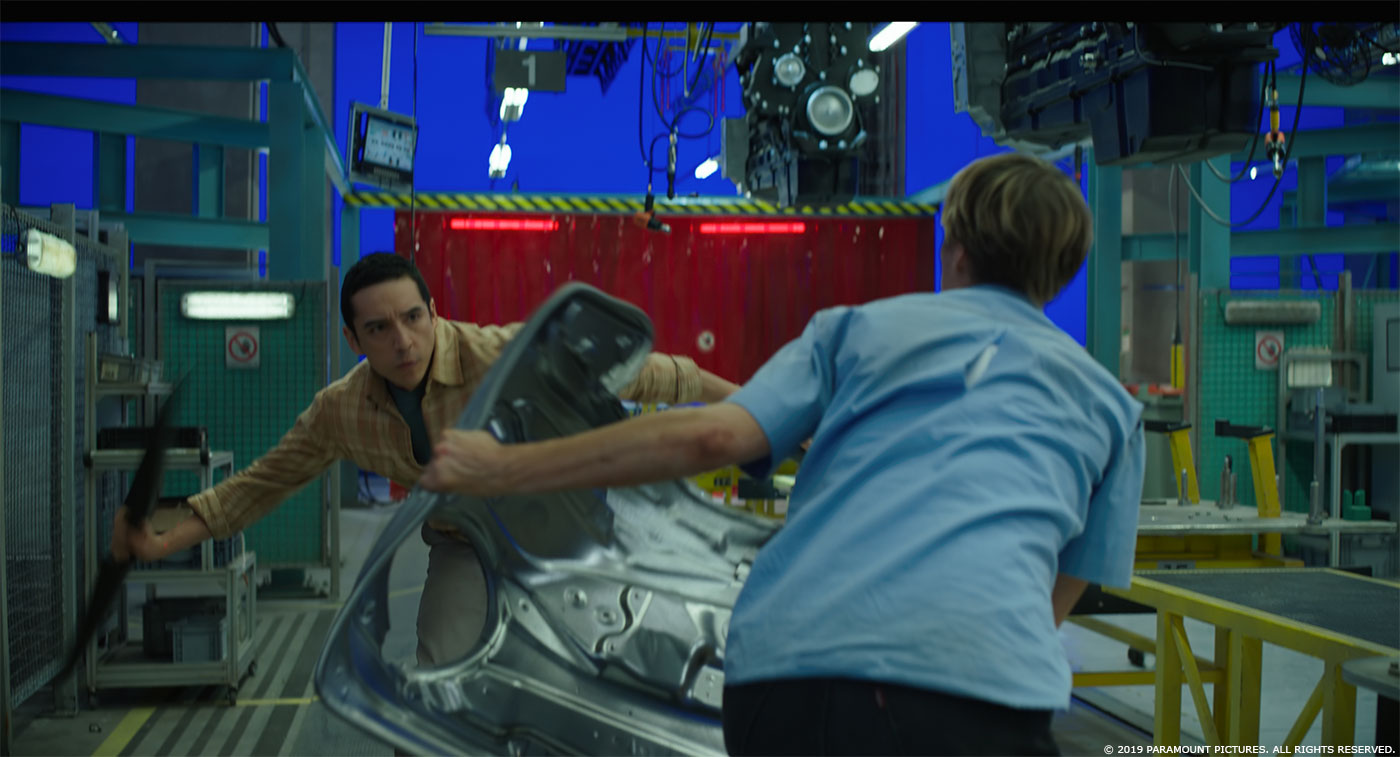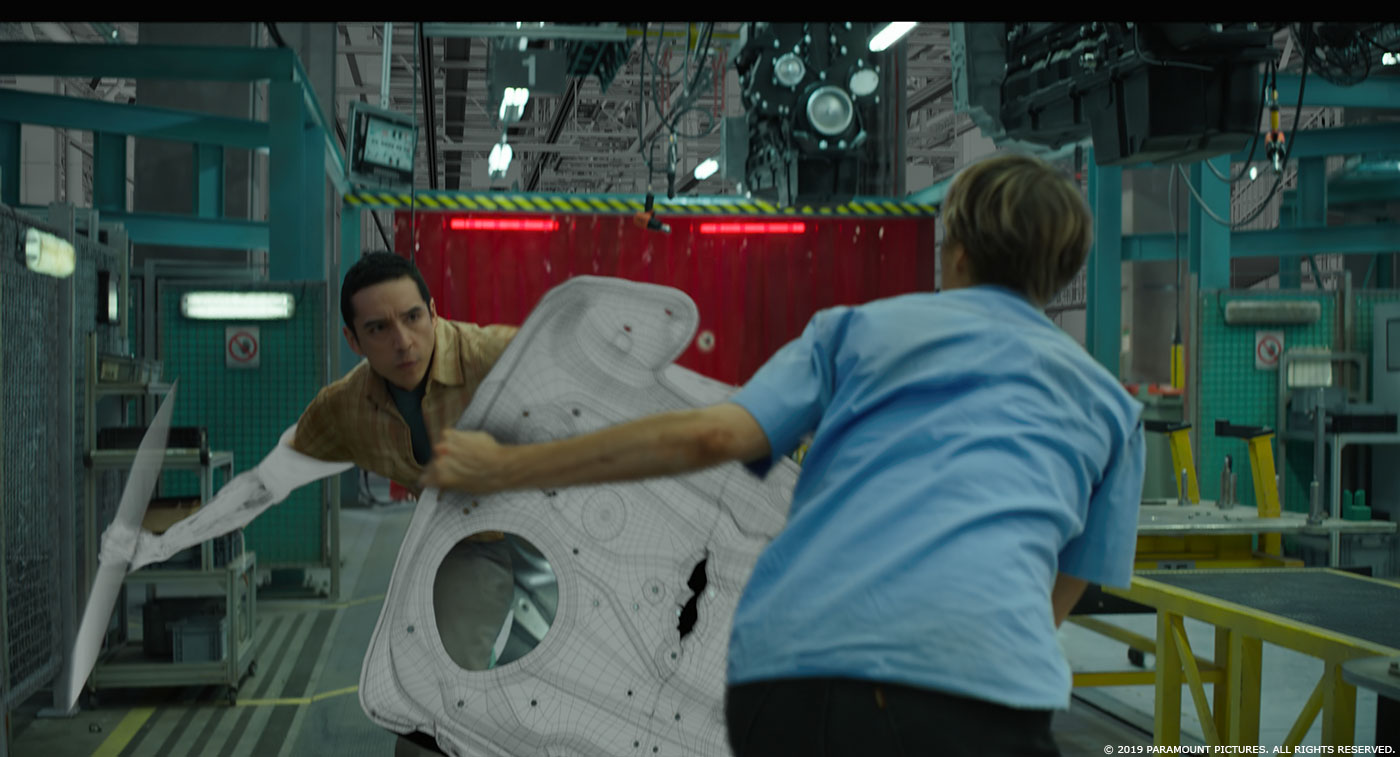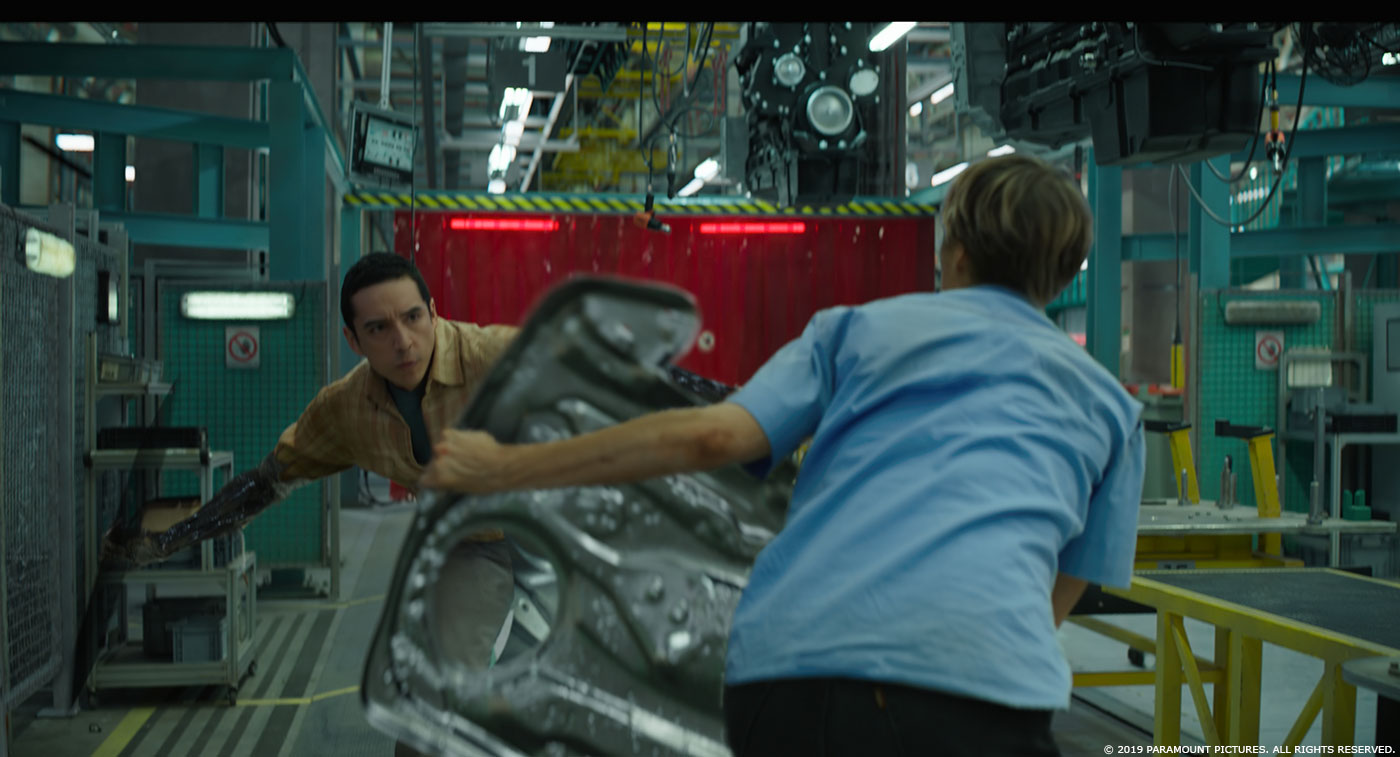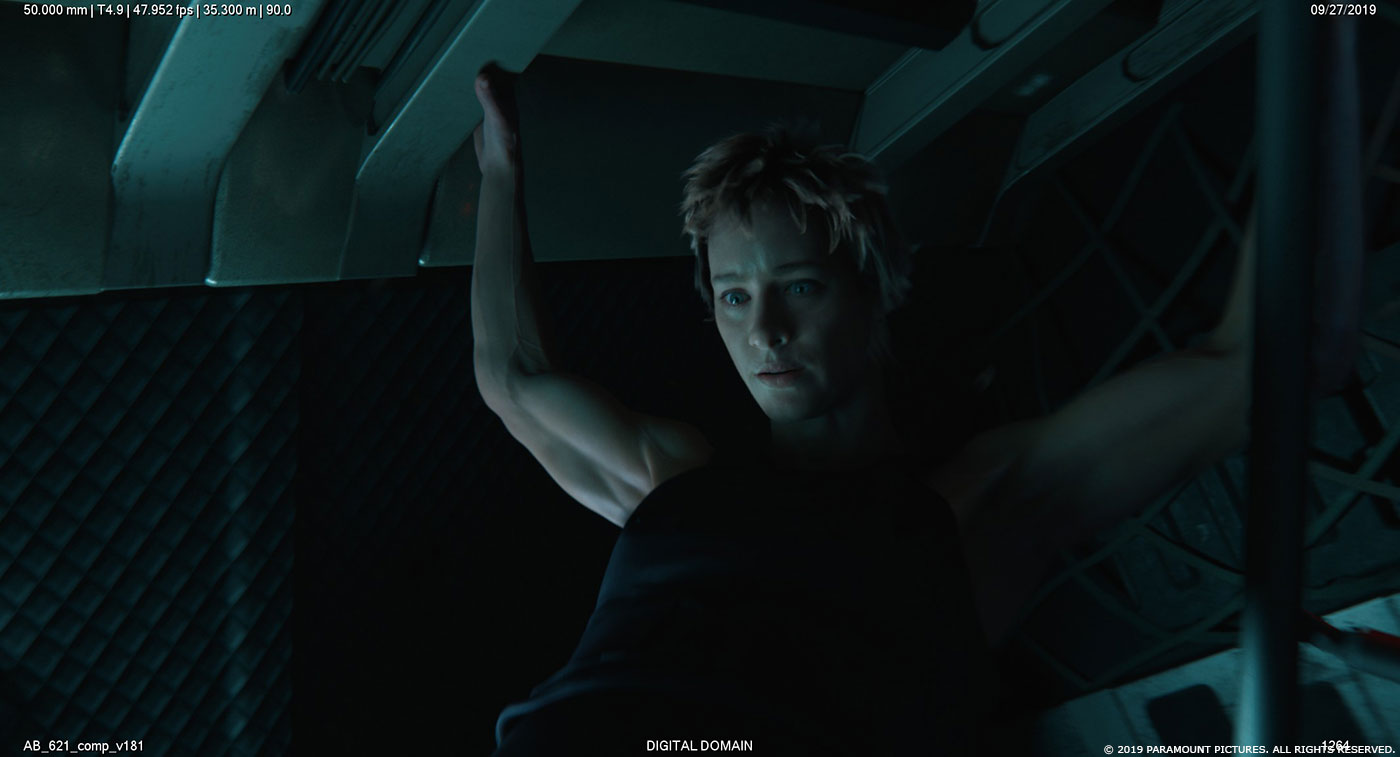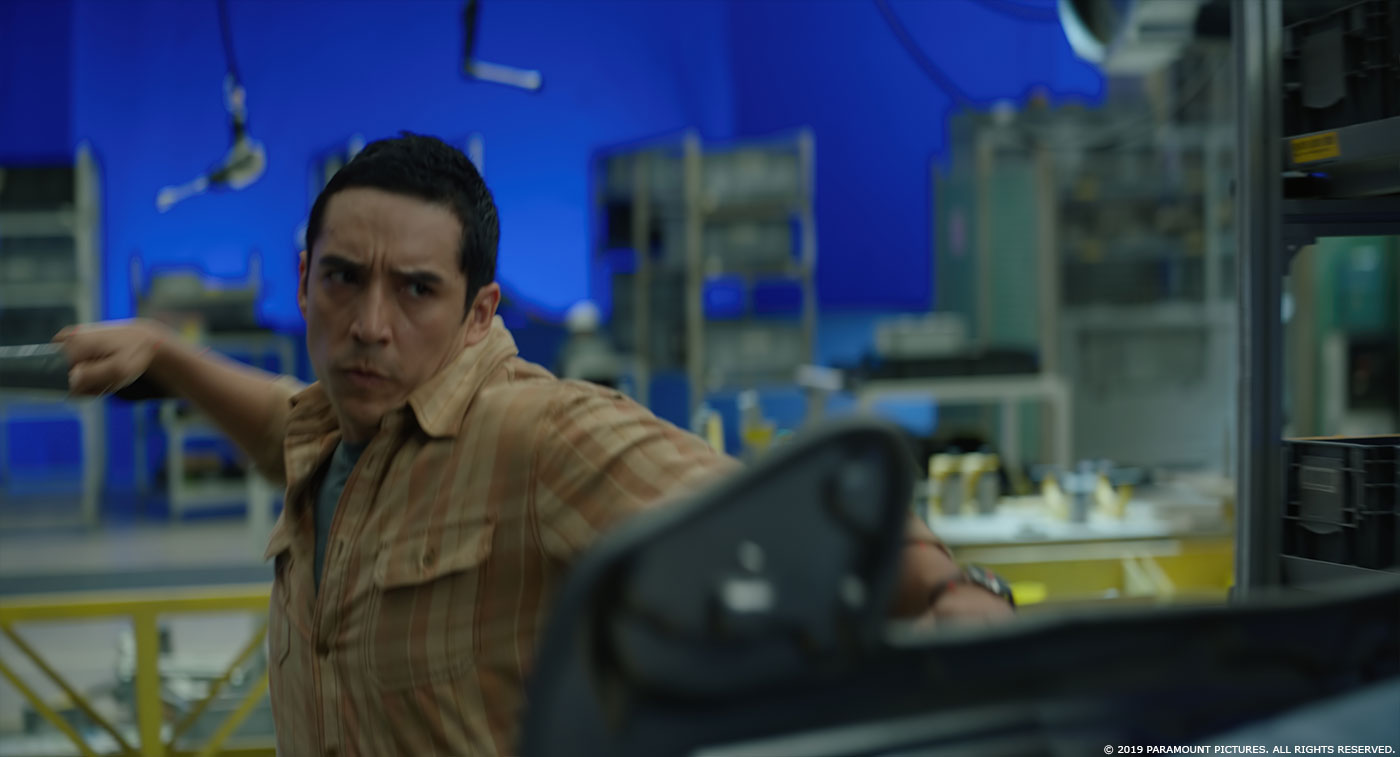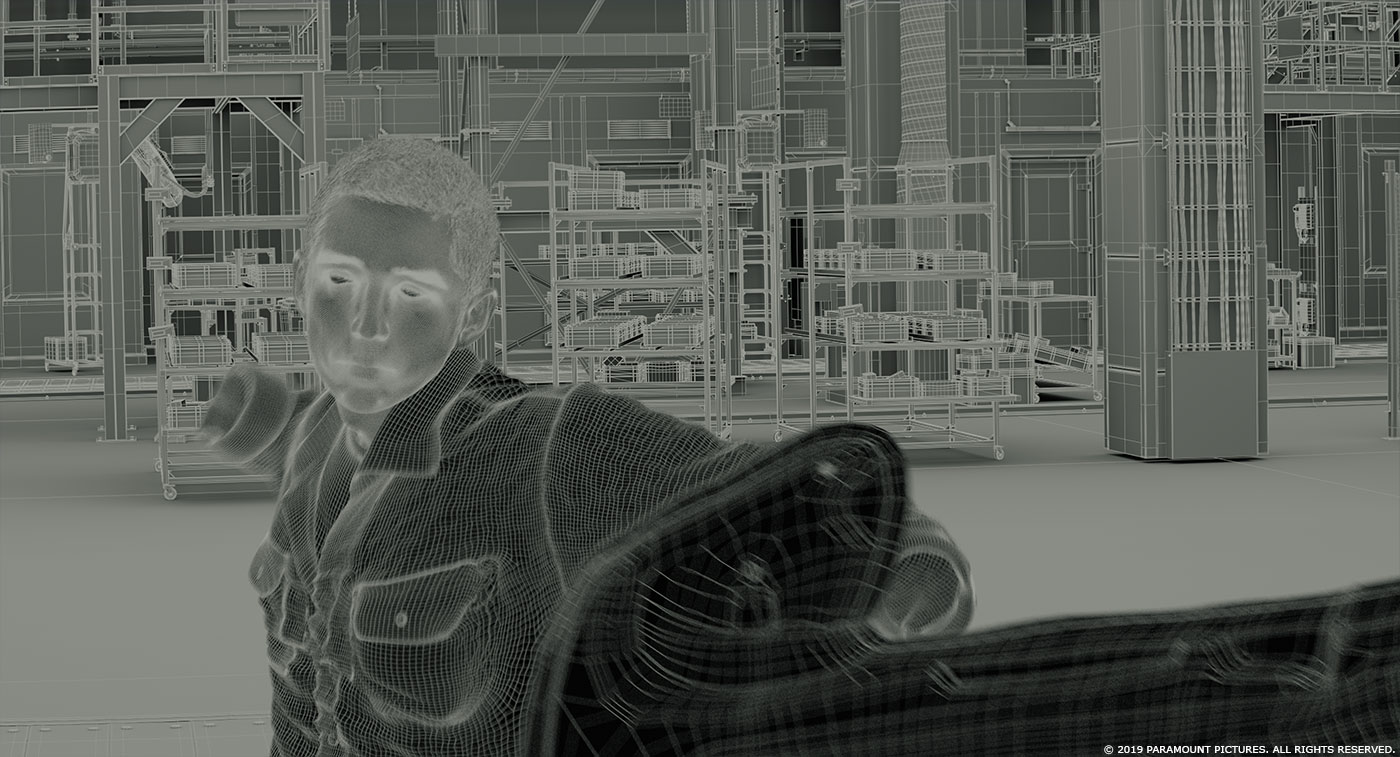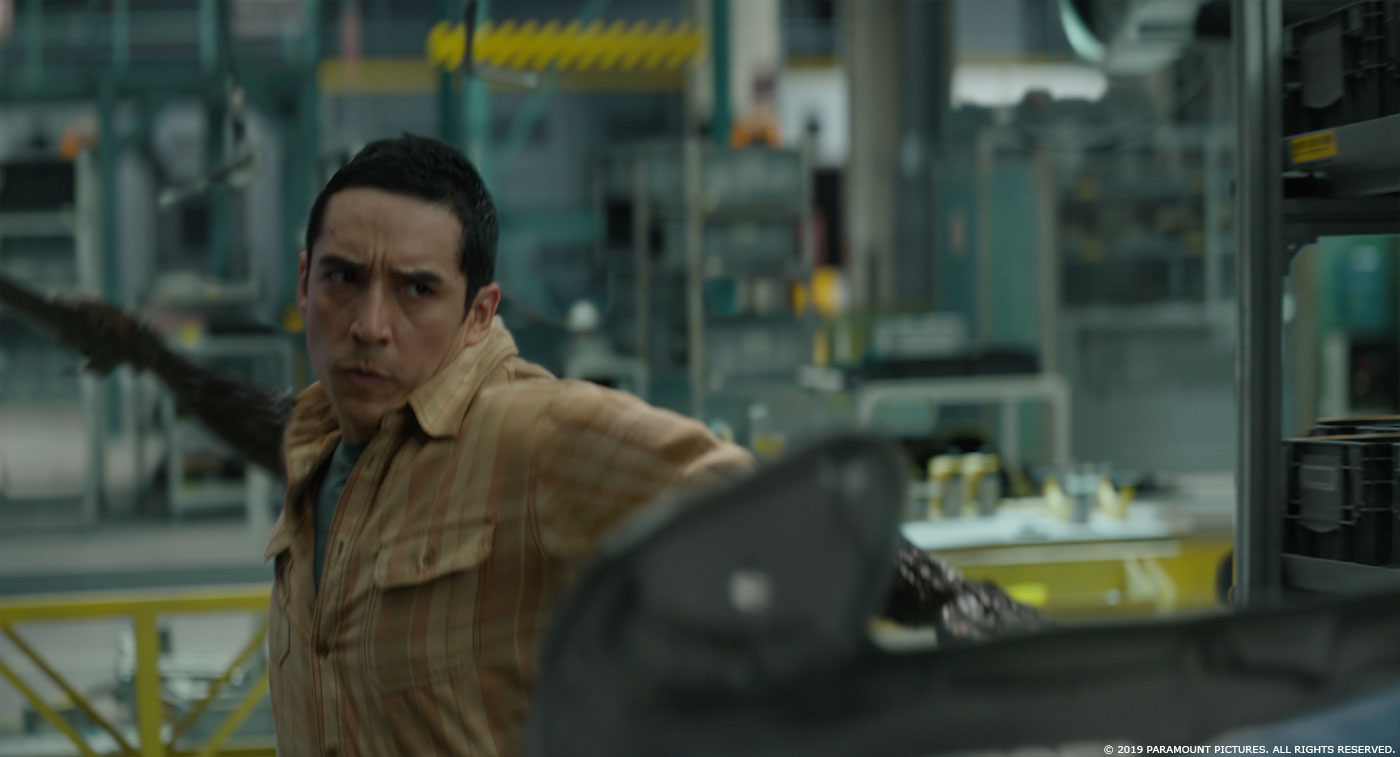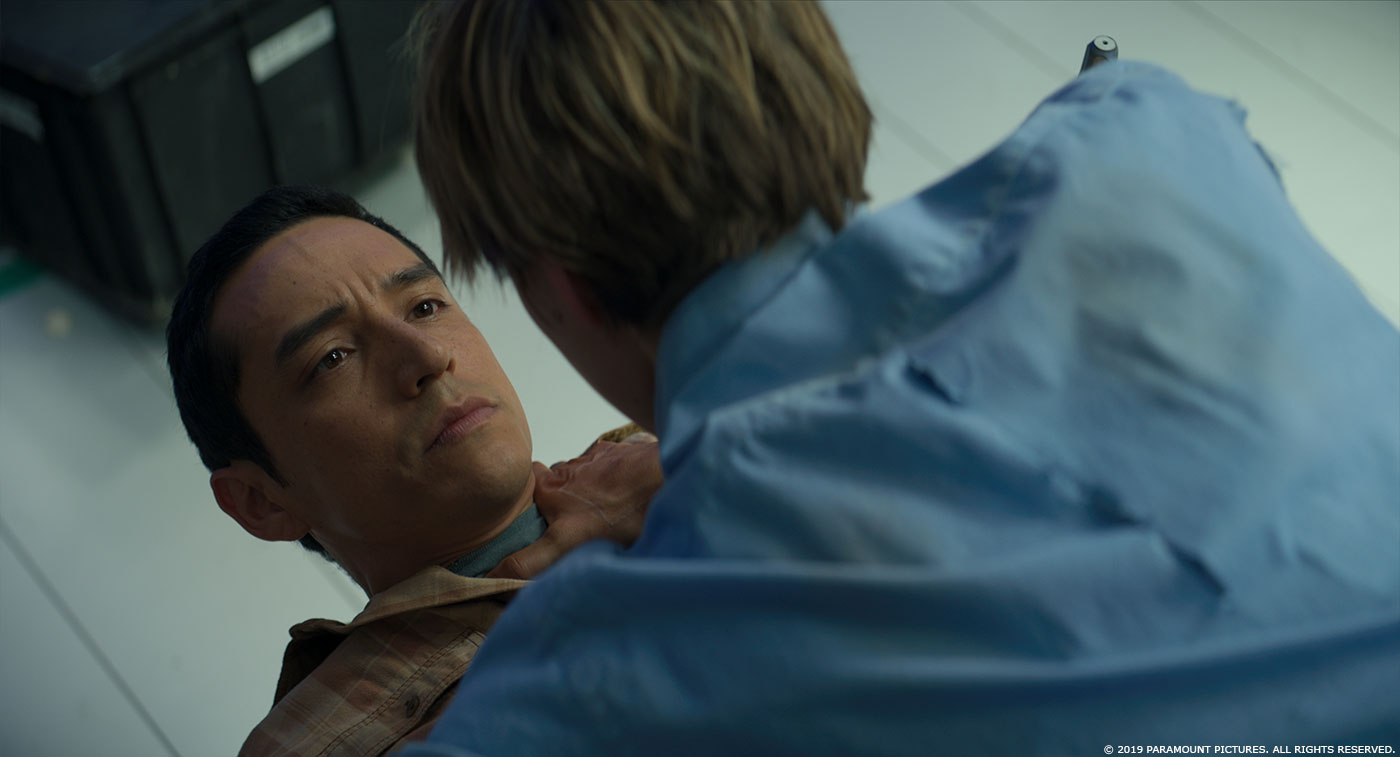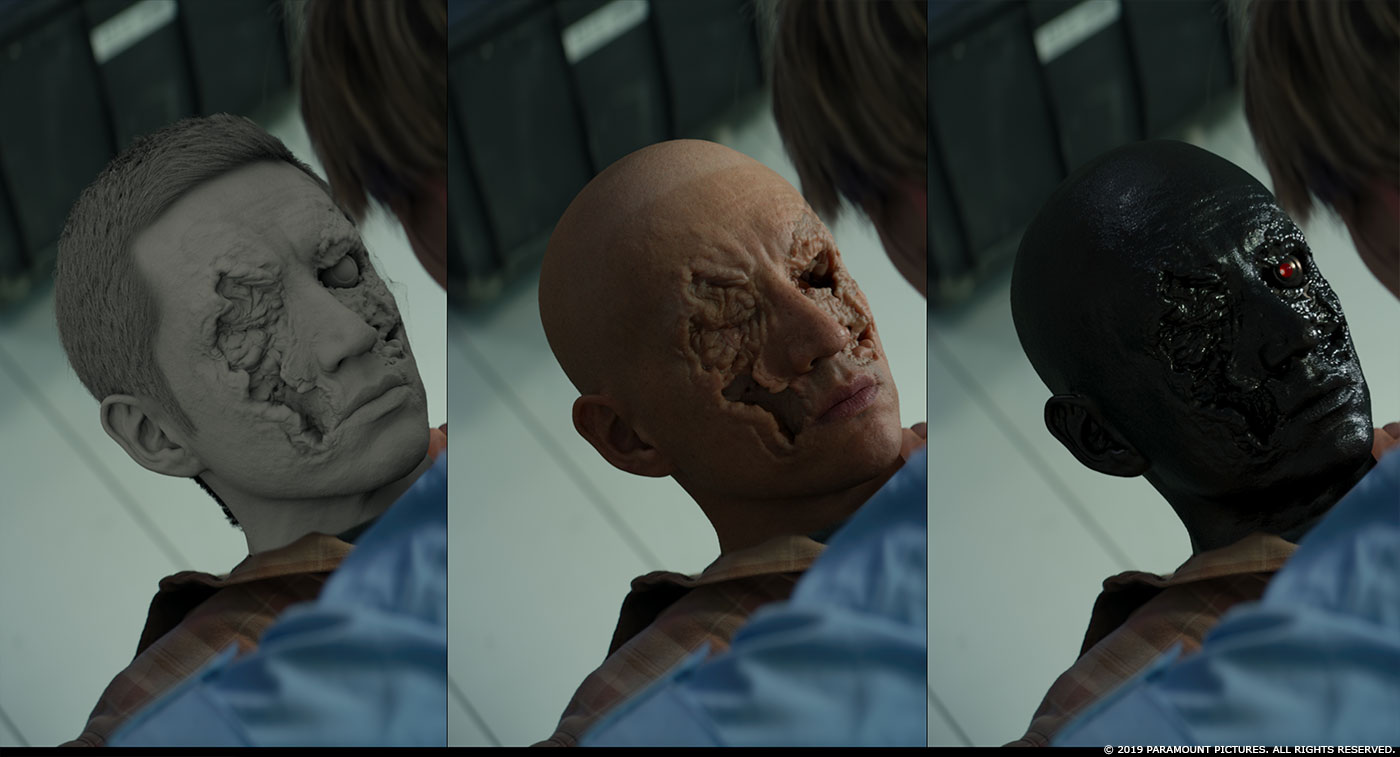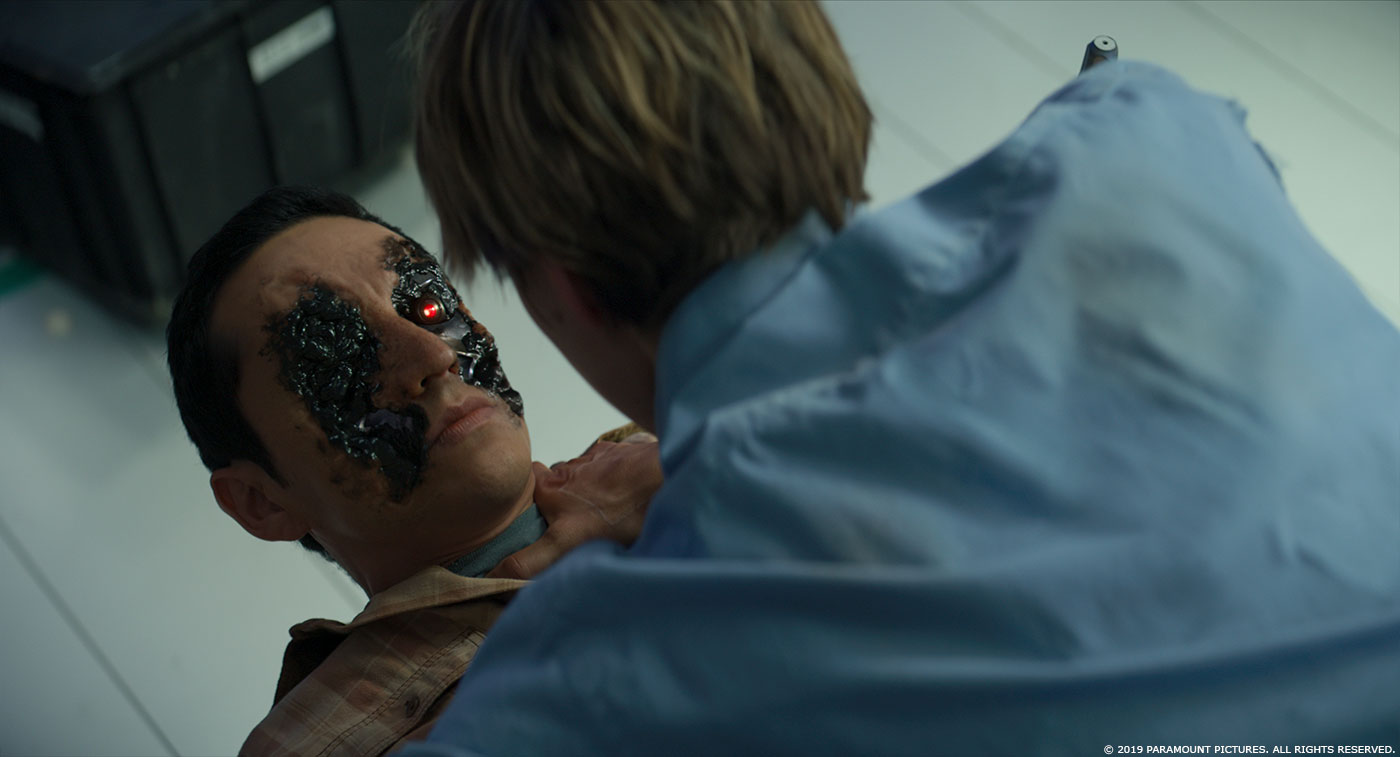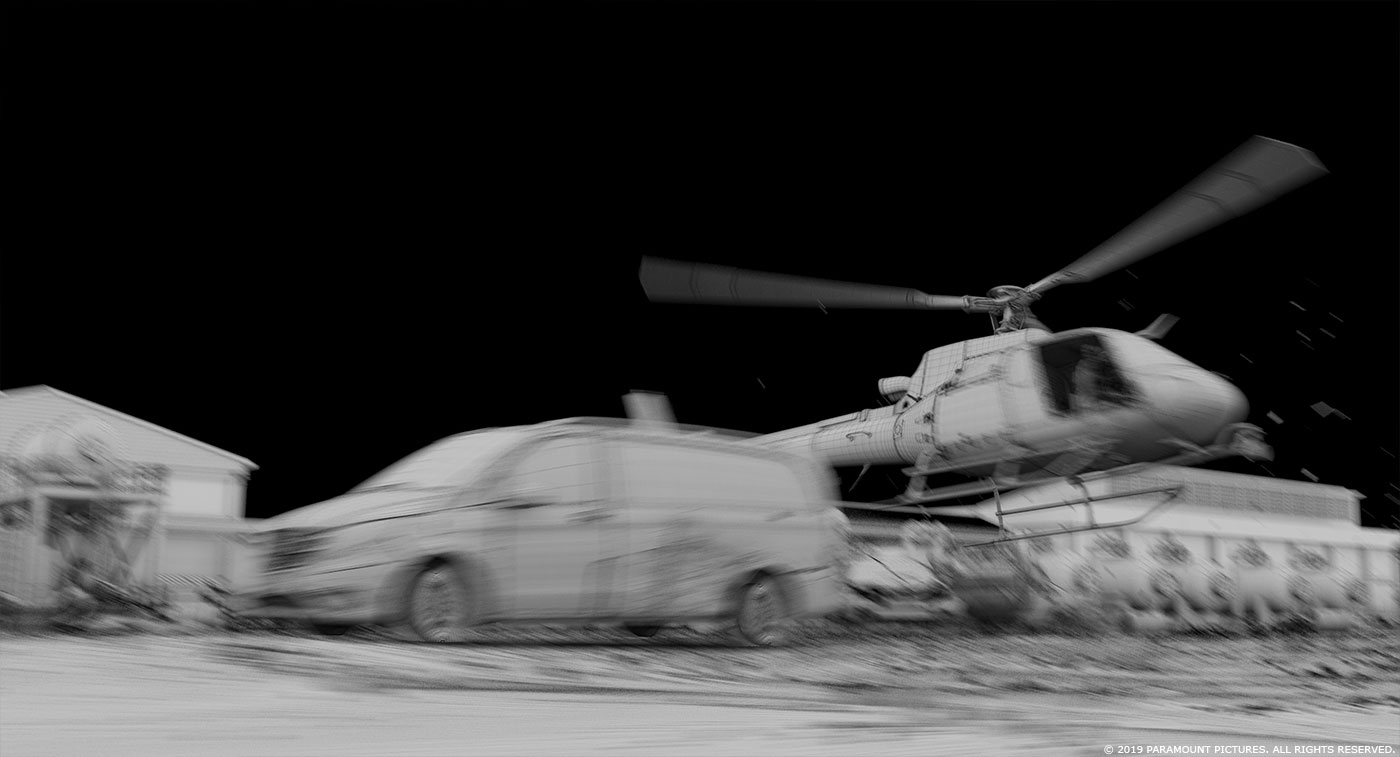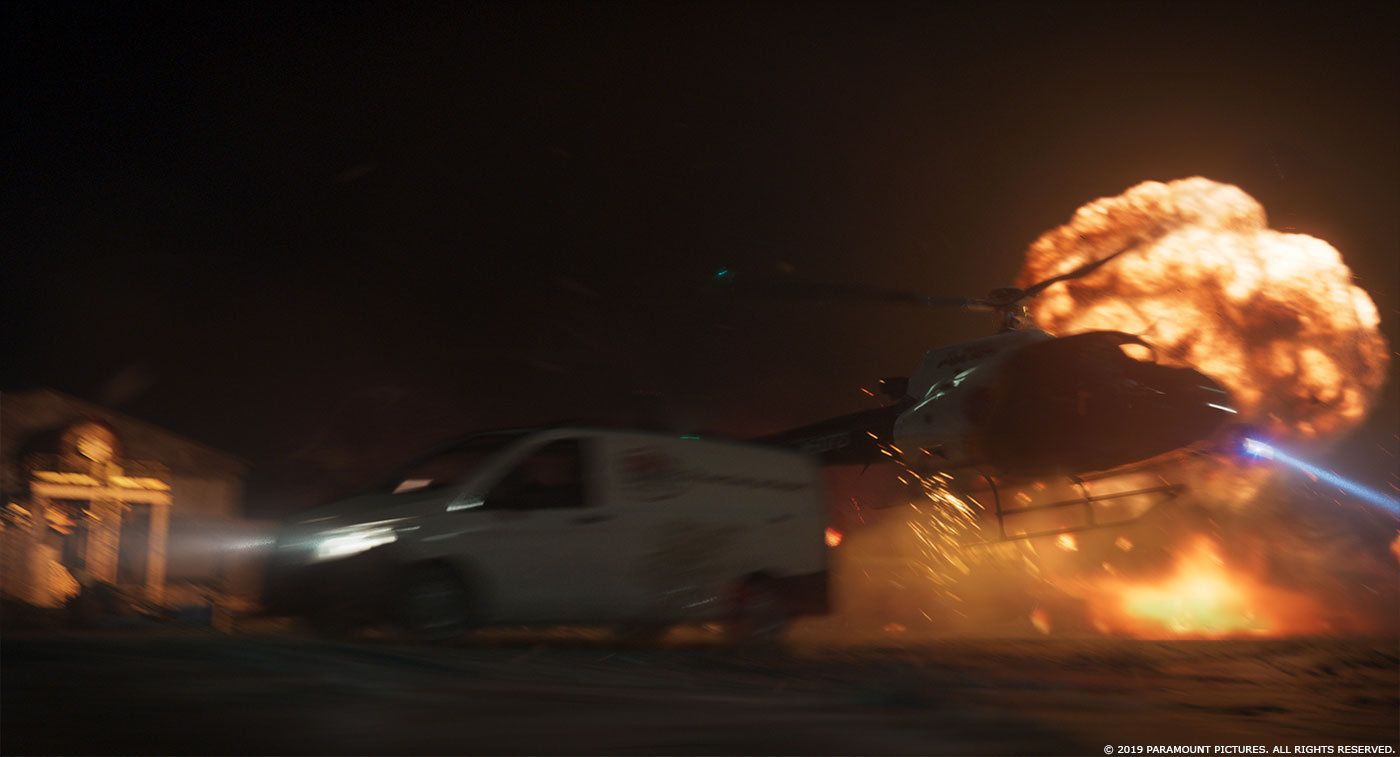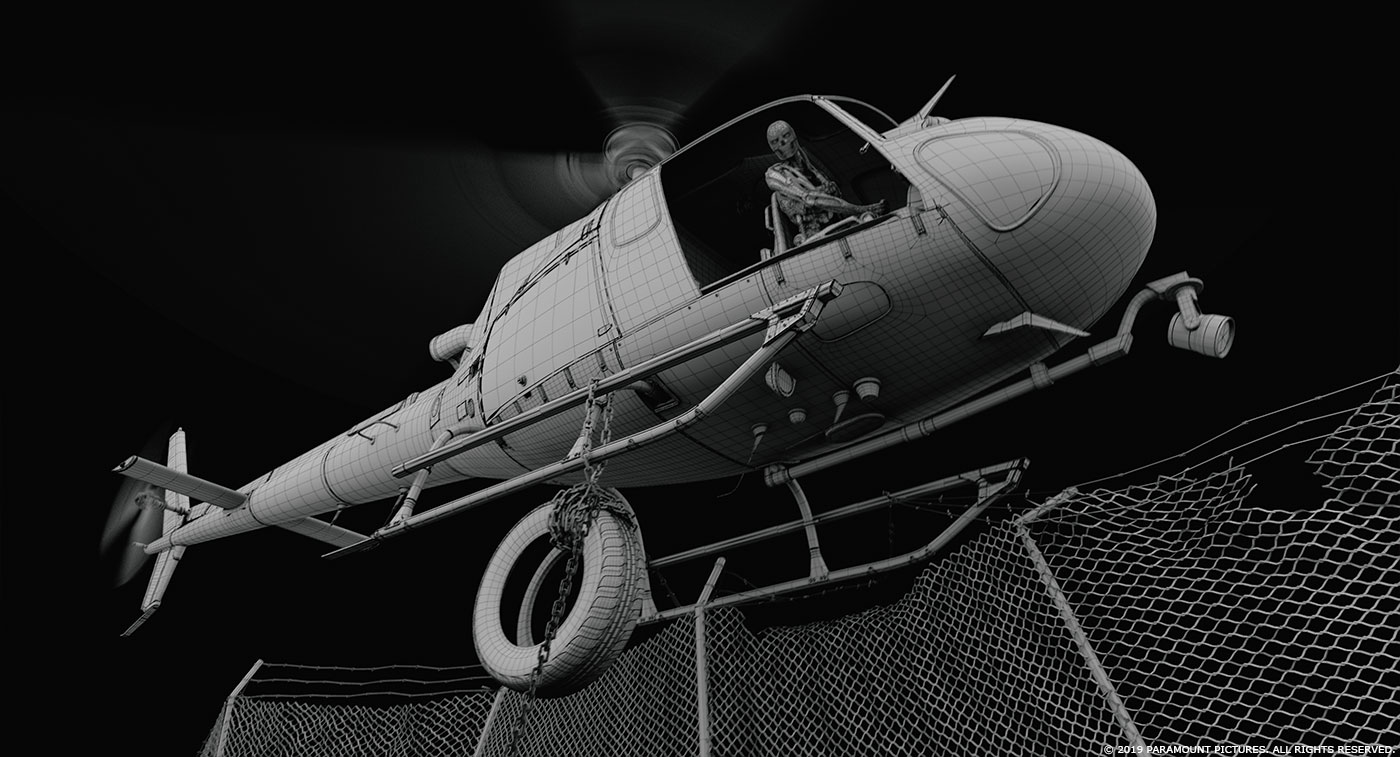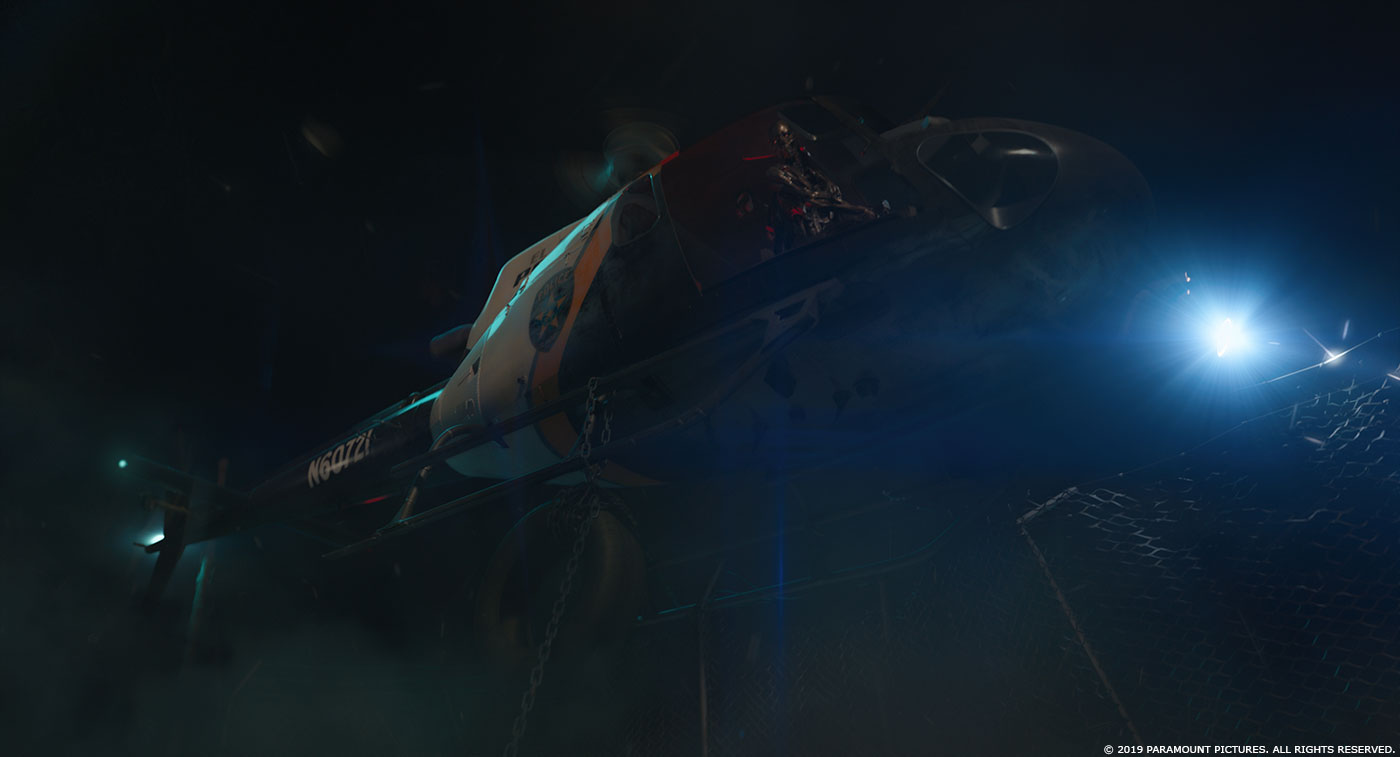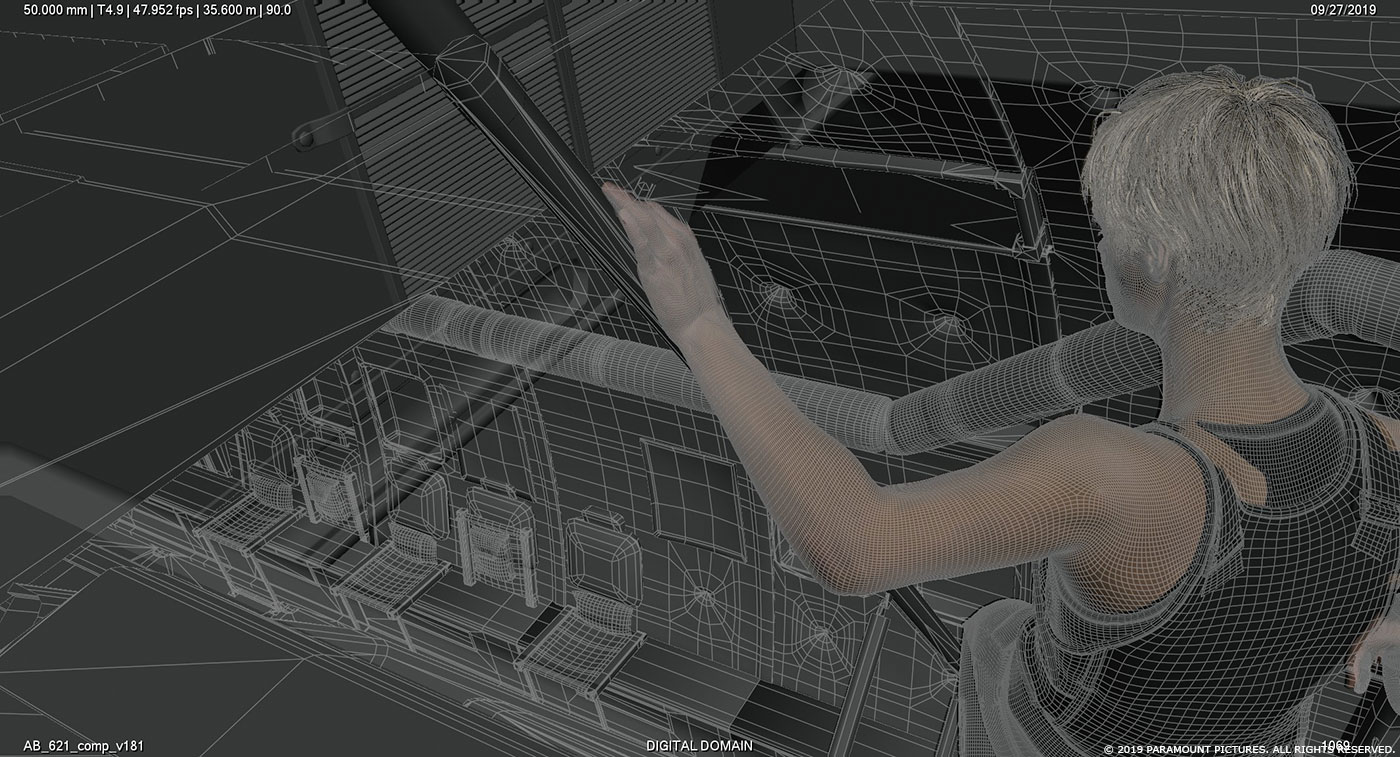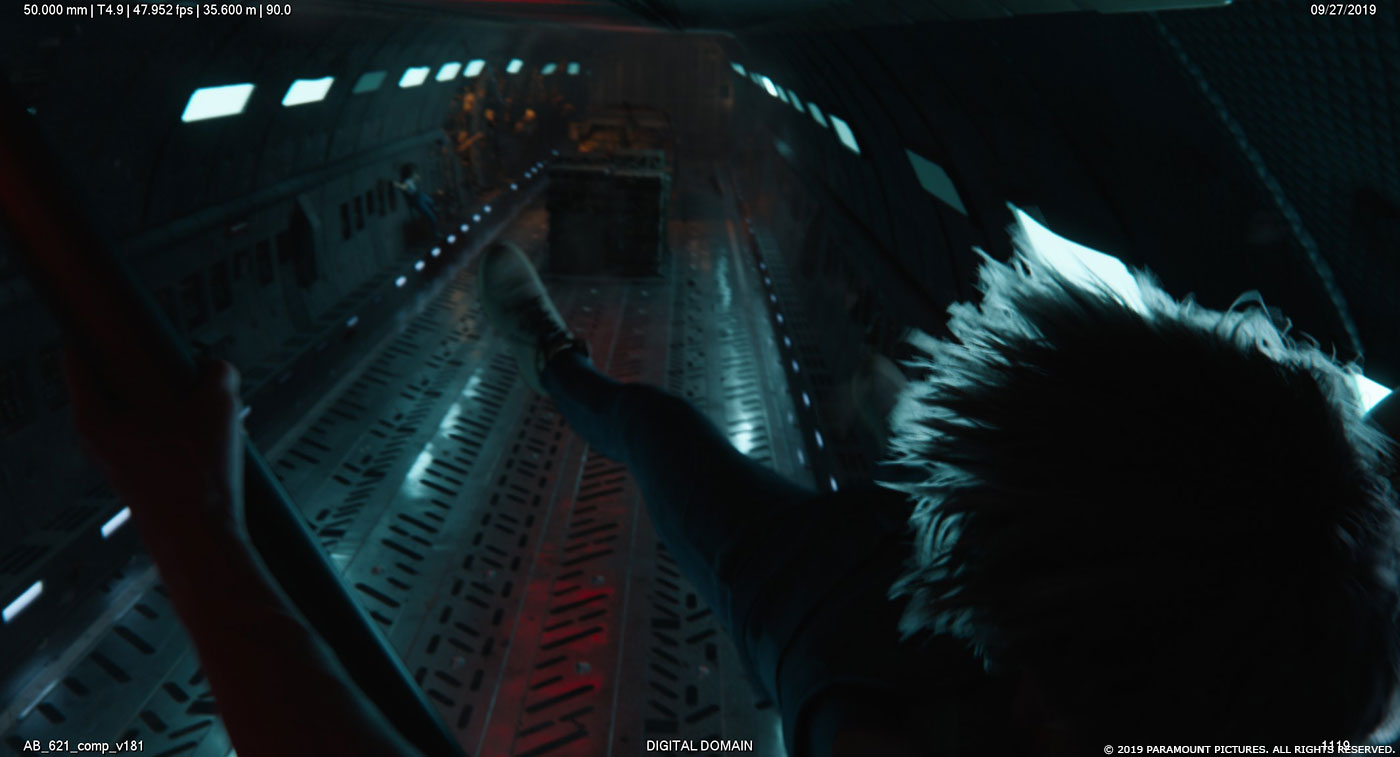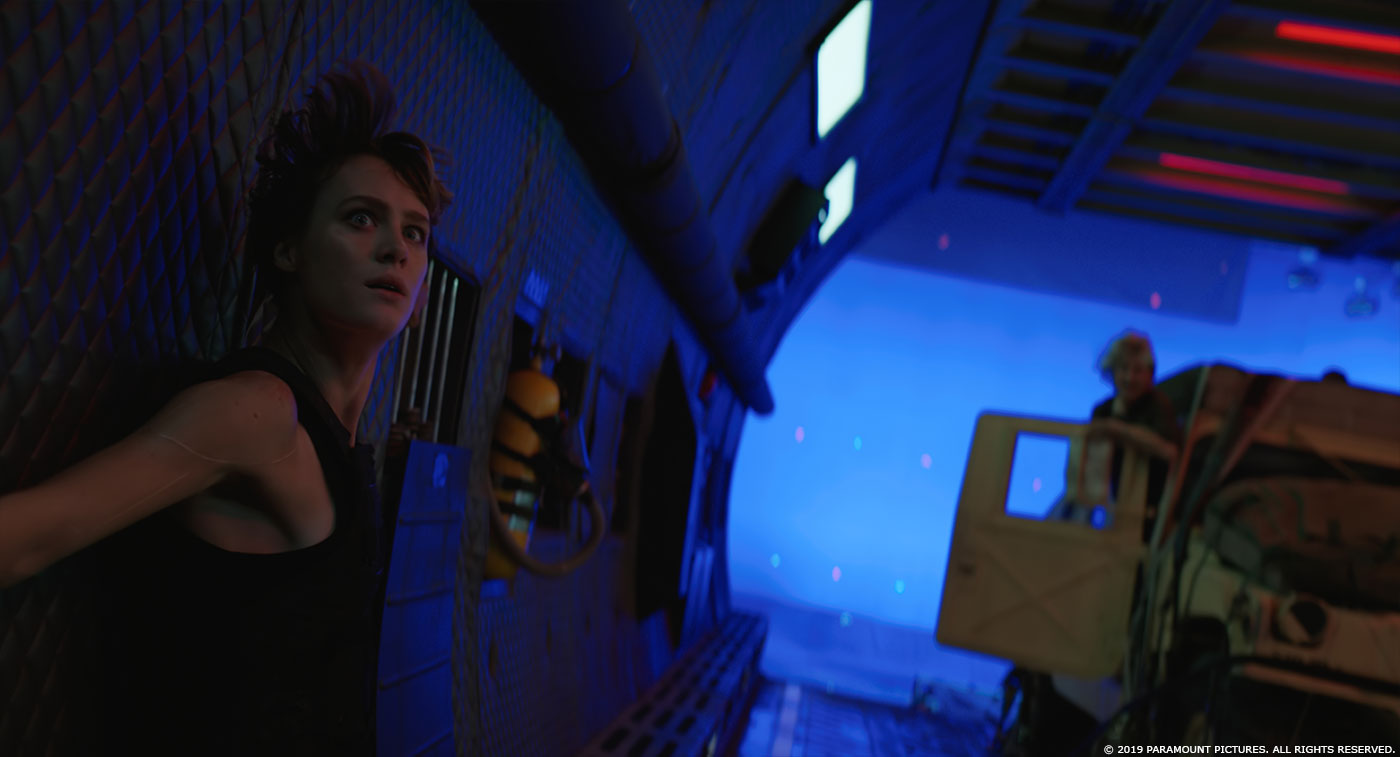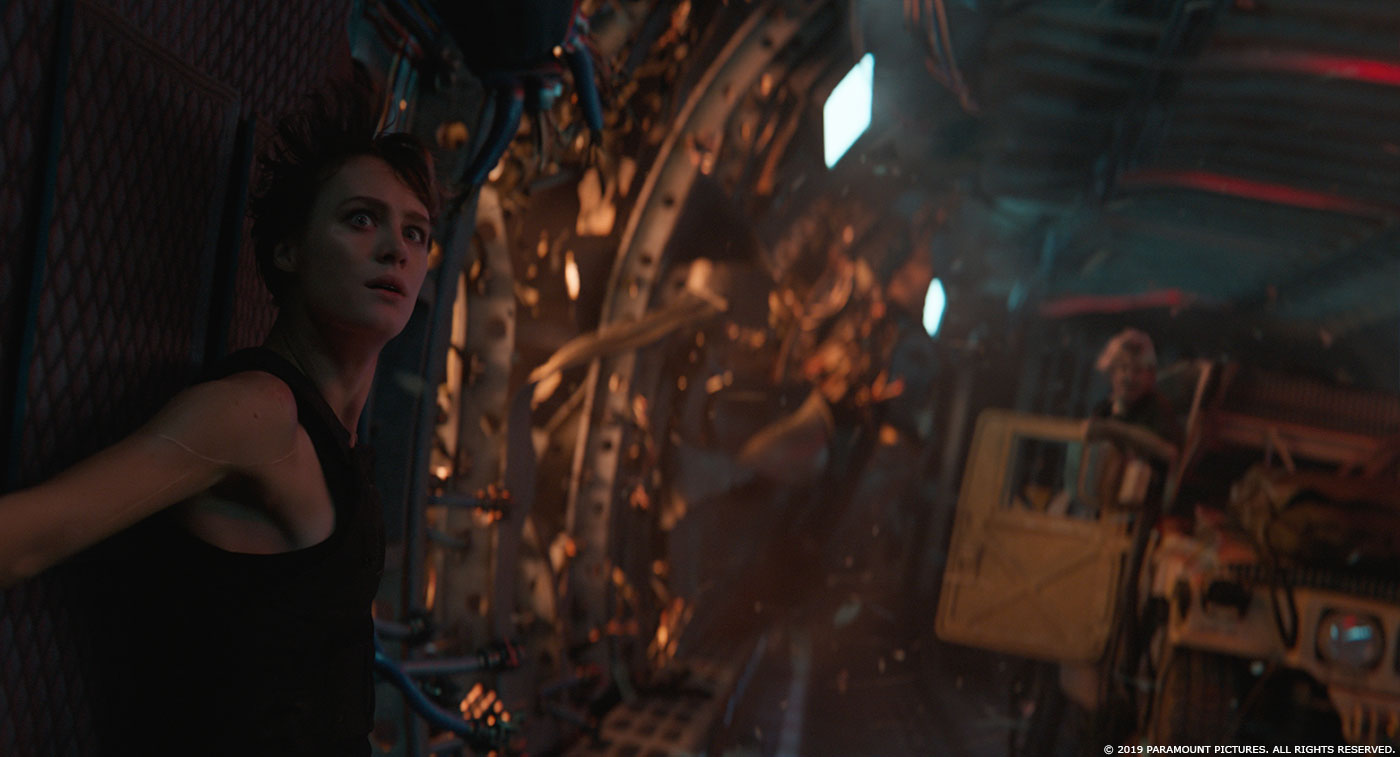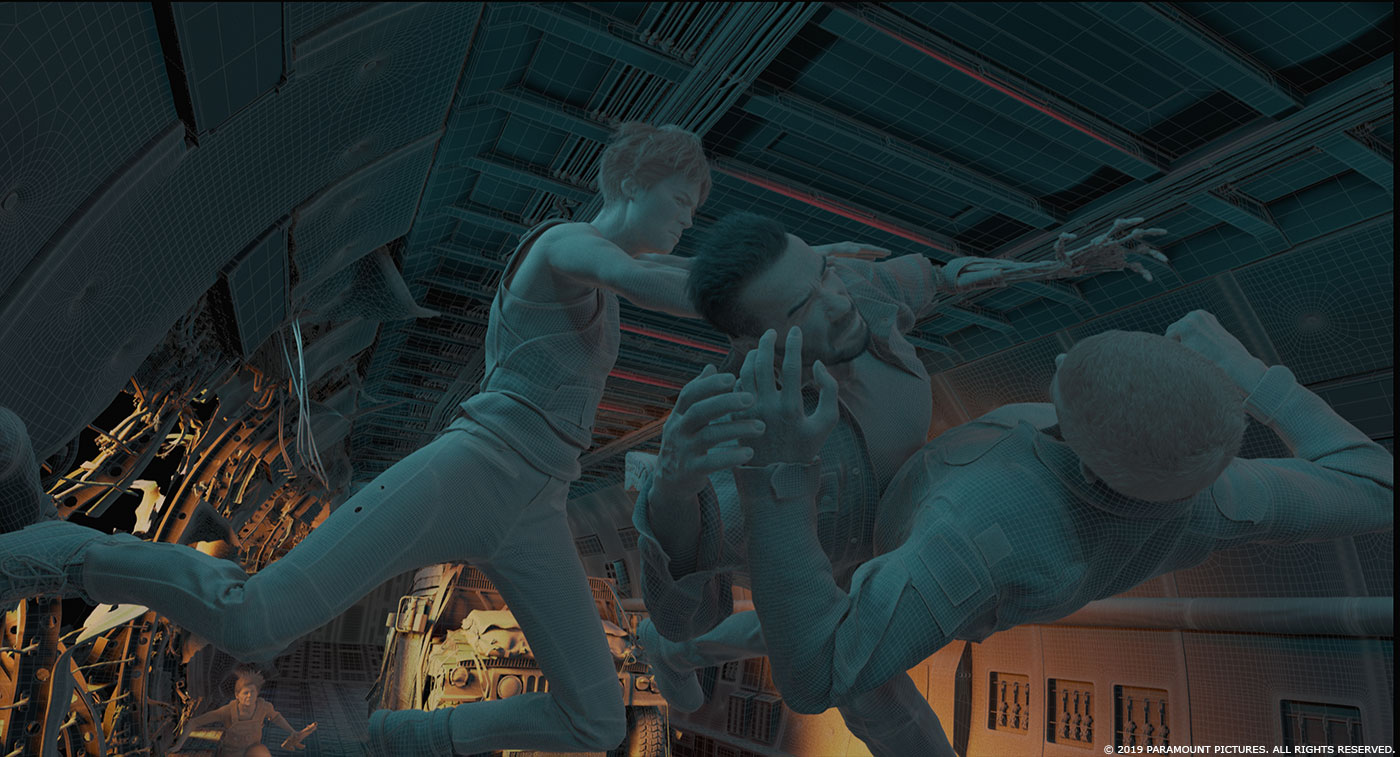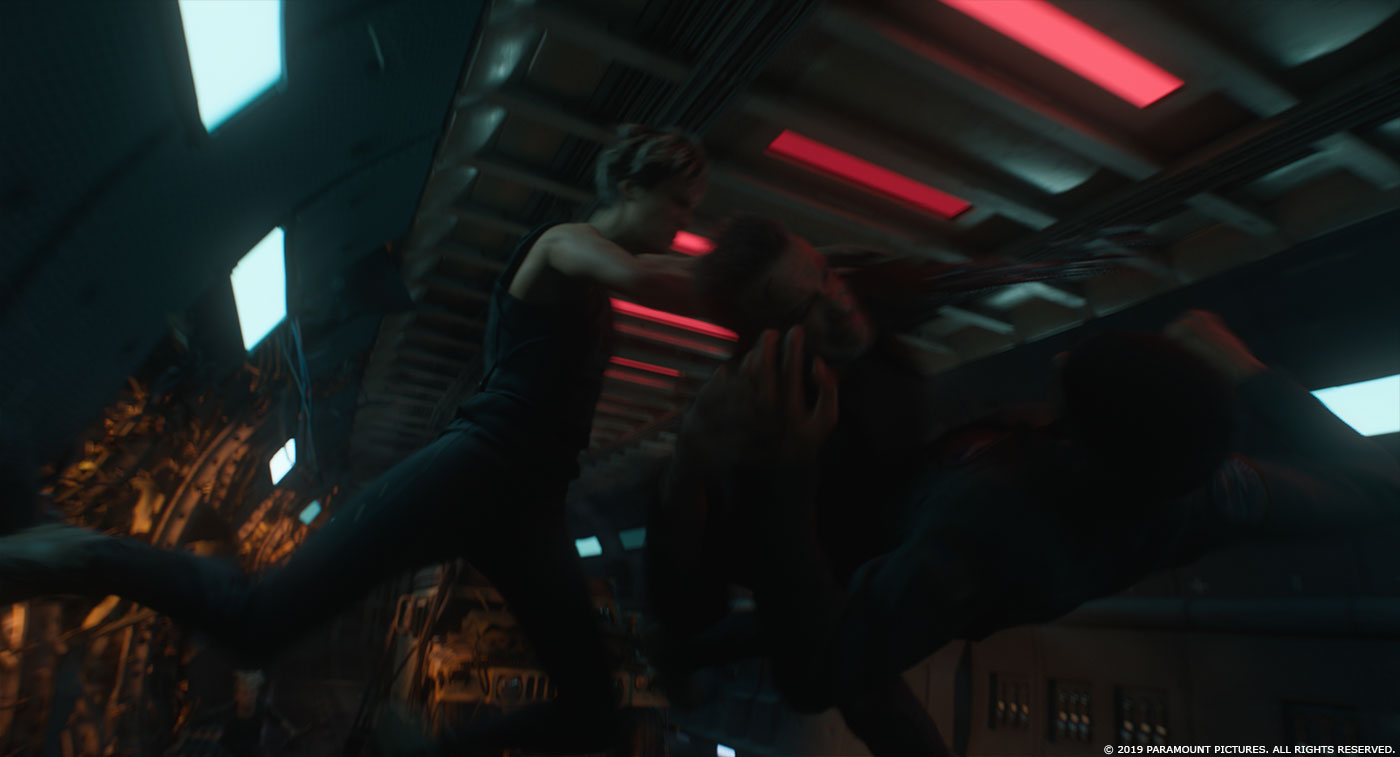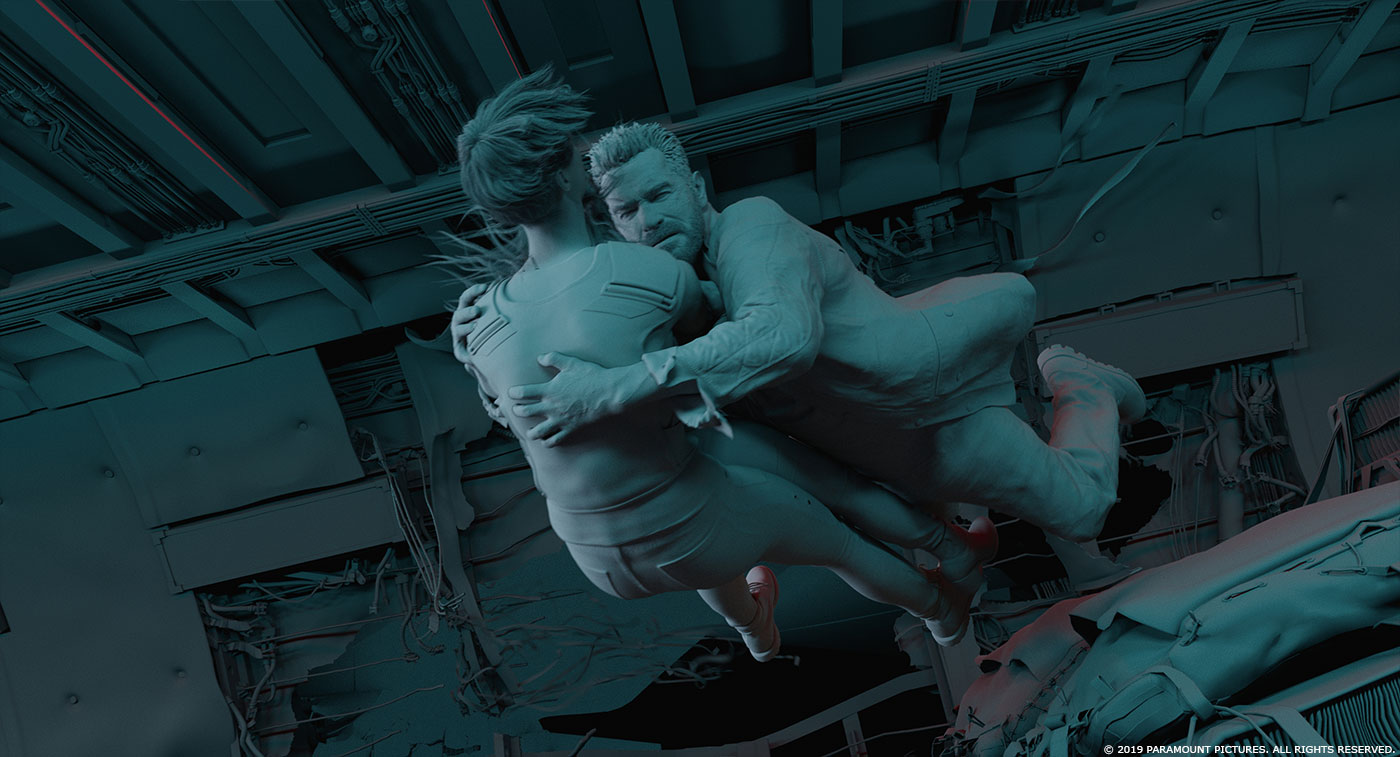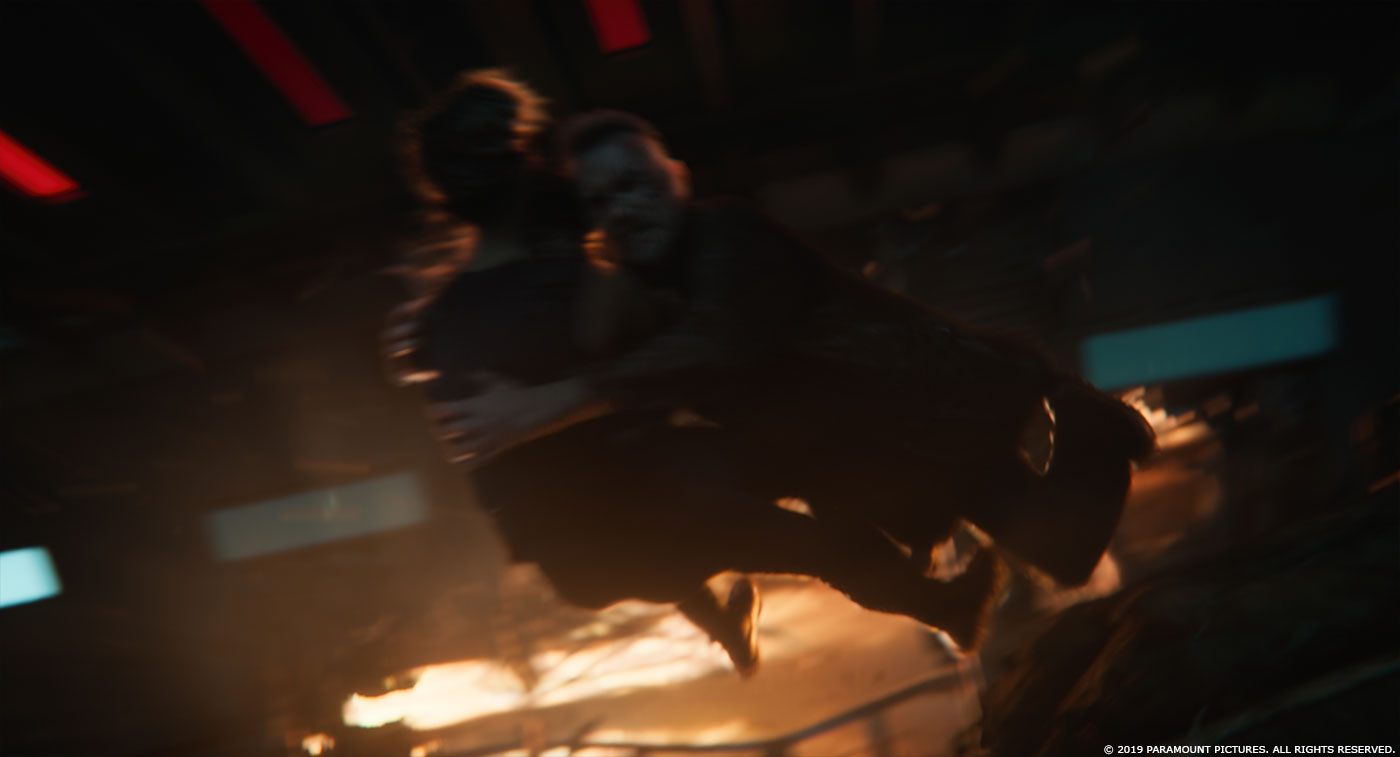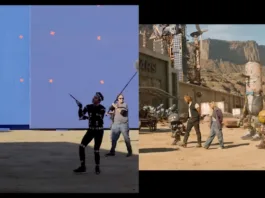In 2018, Jay Barton explained the work of Digital Domain on AQUAMAN. He talks to us today about his work on TERMINATOR: DARK FATE.
How did you and Digital Domain get involved on this show?
We were brought on to help the production achieve some of its more ambitious goals. The sequences dealt with digidoubles, head replacements and hard-surfaces like the interiors of the C5.
What was your feeling to be part of the Terminator universe?
Great. It’s one of the cornerstones of the sci-fi universe. Who doesn’t want to work on robots from the future! I have always been a fan of the series so I was honored that we got the chance to contribute to this latest installment. Since this is considered a direct sequel to T2 it feels like a close connection to the first 2 films.
How was the collaboration with director Tim Miller and Overall VFX Supervisor Eric Barba?
Great. Digital Domain worked with Tim on DEADPOOL and had a great experience. There was always an open line of communication between Tim, Eric and our team. Being only a few minutes away also enabled us to have a lot of face time and really work through ideas for the final effects in our sequences.
What was their expectations and approach about the visual effects?
There was a very specific thought process behind all the effects for this film. With regard to the T-800, Rev-9 and Grace being “more than human,” it was important to showcase their abilities without making them look like superheroes – especially the Rev-9, as Tim wanted to emphasize that a machine would make different decisions than a human would. It had to look cool, but that was never enough. We had to defend our choices in order to make sure we weren’t leaving any small subtleties on the table that would all point to the single mindedness of the 2 terminators “programming.”
How did you split the work amongst the Digital Domain offices?
The animation, look-dev and lighting were all done in our Vancouver office. Environments and compositing were shared between our LA office and Vancouver, and a majority of tracking, roto and paint was done in our India office.
What are the sequences made by Digital Domain?
Digital Domain primarily worked on the factory fight between Grace and the Rev-9, which included background extensions for the car factory, Rev-9 Blade effects and stunt head replacements for both Grace and Gabriel– as well as a full Gabriel Digidouble. We also worked on the derelict building sequence where the Rev-9 catches up to our heroes and attacks/chases them both on foot and via helicopter in an abandoned industrial complex, and the air battle sequence where we did the interiors of the C5 Galaxy fight between Grace, Arnold and the Rev-9. This fight required head replacements for stunt doubles as well as full digi doubles for Sarah, Dani, Grace, Arnold and Gabriel.
Can you explain in detail about the creation of the REV-9, the new Terminator?
The Rev-9 was an established asset by the time we came on.
A big fight happens between Grace and the REV-9. How did you work with the stunt team?
Our stunts were already filmed by the time we came on the show.
Which stunt was the most complicated to enhance?
There is a shot in the C5 cargo bay during the fight between the T-800 and the Rev-9. It is multiple takes seamed together with a mix of actors and stunt doubles that changes between takes. The shot transitions in and out of head replacements, cyborg body enhancements and digidoubles as the two robots throw each other around the plane’s interior. It’s split into a few shots in the edit, but was delivered as one continuous shot.
How did you create and animate the various damages on the REV-9?
We would model key frames of the damage, and use Houdini to do various types of simulations. That included having the Rev-9’s skin and/or liquid metal flow along the endoskeleton and through those shapes.
Can you tell us more about the animations of the REV-9 transformations?
We did damage and healing on the Rev-9, but not any of the transformations. They were developed by ILM.
How did you extend the factory interiors?
We inherited assets that had already been developed that we had to lookdev and adjust for our layout and lighting pipeline.
How did you create the Derelict Buildings and his vast environment?
There was limited Lidar for the area near the main building that was photographed. We extrapolated from this to create the rest of the building, and created the rest of the layout from scratch. Once the edit settled, we did a “birds eye view” of all the action beats in order to get the proper scale for the environment based on the speed of the van and the helicopter, so we knew how much world needed to be created. It was a mostly 3D environment with a bit of matte painting to help add detail in the backgrounds.
Can you explain in detail about the creation of the aircraft and especially the C-5?
ILM had already begun work on the exterior collisions and damage to the outer hull of the plane. Our interior undamaged model was based on elements of the shortened interior set (the set was just under ½ the length of the needed plane interior, and re-dressed to stand in for whatever section they were meant to be in for each action beat). We worked with ILM to make the interior — and its damage — line up with what we see from the outside while still working for all the action beats necessary for the interior shot photography. Sometimes it was all CG, and sometimes it was an extension of the shot set.
During this sequence, the C-5 is suffering major damage and destruction. How did you create them?
Since we had many shots to complete with the interior already damaged, we concepted out the interior damage to work with the interior action in the clean set, and to make sure that it would still work with what ILM was developing for their exteriors. Once we liked it, we went straight into model and texture. While we would have liked to run simulations to do all the destruction and then leave that as the final post impact model, our schedule wouldn’t allow that. Once we had the model, we did rig and simulate panels vibrating, and material and wires flapping about in a modular way to accommodate the various speeds to match plate photography. For the actual destruction shots, we used the final model as a template for the amount of damage we needed to end up with, and those damage simulations — as well as the accompanying spark, debris and flame elements — were generated in Houdini.
Can you tell us more about the fire creation and animations?
We had a full Houdini FX team lead by Eddie Smith that was responsible for all the big explosions and dynamics we were tasked with. DD really knows how to “blow stuff up” so we were able to hone in on some really nice effects for the fire and explosions with such a small schedule.
There is a super slow-mo shot with explosions. What are the main challenges for this kind of shot?
Slow motion shots with fire explosions and dynamics are tricky, especially if they need to cut editorially with the same effect in real time/speed. We have developed tools to extend shots simulated in real time and add interpolated detail to the sims. Not that we had to for this project but these really help when you need to speed ramp during an FX shot as well.
Can you elaborate on your work during the big fight inside the C-5?
After the collision between the C5 and the refueling plane Grace is forced to leave the pilot’s seat and join the fight by enabling the auto pilot. As damage is continuing to happen to the plane exterior, including engines blowing up, this causes the autopilot to continually try and correct the planes trajectory. This cycle of damage and correction puts the plane into a series of climbs and dives that make the gravity inside vary. Sometimes forward, sometimes backward, Zero G etc. There were a variety of techniques used with the actors and stunt doubles including tilting the set and wire work. We worked within this framework to accentuate the shifting gravity. CG digidoubles reacting to the changing gravity as they fight, debris from the collision as well as crates and weapons flying around the interior. All this in addition to the actual fighting going on between Grace, Arnold and the Rev 9. Developing the Rev 9 face tentacles that rip the flesh from Arnold’s arm as he is being punched was especially fun.
Which sequence or shot was the most challenging?
In the air battle after the collision has taken place, Dani screams for Grace’s help. There is a plate for Grace in the cockpit on a bluescreen set that did not have a stairway or a connection to the cargo bay below. Grace puts on the autopilot, and as she moves away from the pilot seat the shot turns fully CG to follow the Grace digidouble down the CG stairs into the cargo bay area. There she transitions to follow the gravity of the plane in a steep climb. As she is hanging there, surveying the damage and the imminent threat to Dani, the camera goes past a full frame head and face. We used an element shoot of multiple cameras with Mackenzie to track, model and animate her face performance, as well as to project textures to blend with the CG face render — add to that blowing CG hair, muscle and cloth sim for her body, etc. We finish as she drops past camera into the tempest of atmosphere and debris to join the other digidoubles in the damaged interior.
What is your favorite shot or sequence?
I really loved how the Grace close-up shot in the air battle worked out, but I’m very proud of all the work we did in DARK FATE.
What is your best memory of this show?
There’s no one memory, it’s just being able to work with some of the best artists in the industry (that are also my friends), on one of the coolest franchises around.
How long have you worked on this show?
Approximately 5 months.
What’s the VFX shots count?
176 shots.
What was the size of your team?
We had approximately 120 people working on this show.
A big thanks for your time.
WANT TO KNOW MORE?
Digital Domain: Official website of Digital Domain.
© Vincent Frei – The Art of VFX – 2019

